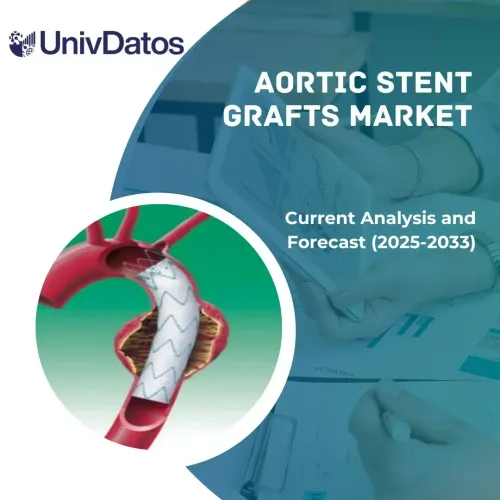- Home
- About Us
- Industry
- Services
- Reading
- Contact Us
Endobronchial Valve System Market: Current Analysis and Forecast (2021-2027)
Emphasis on Product (Duckbill-shaped Endobronchial Valves, Umbrella-shaped Endobronchial Valves); End-Users (Hospitals, Clinical Research Centers, Ambulatory Surgery Centers, Others); and Region & Country.

Endobronchial Valve System Market is expected to exceed the market valuation of more than US$ XX million in 2027 and is expected to grow at a significant CAGR of XX% during the forecast period (2021-2027). Endobronchial Valve (EBV) treatment, like the lung volume reduction surgery, is aimed at removing hyperinflated and less functional areas of emphysematous lungs. EBV is however less invasive than surgery and additionally has a lower mortality rate. Furthermore, EBV is also much cheaper than surgery. Endobronchial Valve allows expiration of air from the lobe and prevents its re-inflation. In a completely treated lobe, EBV reduces the lobar volume and eventually a full lobar collapse leading to the reduction of lung hyperinflation leading to improvements in exercise capacity, breathlessness, quality of life, and physical activity.
Over 3 million cases of emphysema have been reported in the United States. Emphysema is most common in men between the age groups 50 and 70. Additionally, also with COPD, most people are at the age of 40 when the first symptoms of the disease start to occur. The geriatric population around the globe is increasing. According to census.gov in the 2030s when baby boomers will be older than 65 years, 21% of the American population will be elderly which is a significant rise from 15% in 2018.
The advancing technologies and the growing elderly populations are the key reasons for the high market growth of endobronchial valves. Due to the aging population, the number of COPD and emphysema cases are constantly increasing in the United States. 16 million adults in the United States have COPD. This however may be an underestimate as many cases are not reported. The American Lung Association (ALA) predicts that there may be 24 million American adults with COPD. Furthermore, 3.5 million Americans have been diagnosed with emphysema. More than 90% of these cases are over the age of 45. Endobronchial Valves (EBVs) have positively improved the health of patients with respiratory difficulties. In a study done in the United States, it was reported that 47.7% of individuals who got EBV experienced improved in the amount of air that they could forcefully exhale in 1 second, compared to only 16.8% of those receiving standard care. The increased awareness among people in the United States about endobronchial valve treatment is also going to help increase the market growth.
Annual Number of Endobronchial Valves Placement Performed, Germany, 2007-2016
Pulmonx Corporation (Zephyr), Spiration Inc., MedLung, Novatech, and Olympus Corporation are some of the prominent players operating in the Endobronchial Valve System market. Several M&As along with partnerships have been undertaken by these players to facilitate customers with hi-tech and innovative products/technologies.
Insights Presented in the Report
“Amongst Product, Duckbill-shaped Endobronchial Valves segment holds the major share”
Based on the Product, the market is bifurcated into Duckbill-shaped Endobronchial Valves and Umbrella-shaped Endobronchial Valves. Amongst products, the Duckbill-shaped Endobronchial Valves segment of the endobronchial valves market was valued at US$ XX million in 2020 and is likely to reach US$ XX million by 2027 growing at a CAGR of XX% from 2021-2027. FDA approved two valves in 2018, the Zephyr EBV (Pulmonx) and the Spiration Valve System (Olympus) (IBV). The Zephyr EBV is a duckbill-shaped silicone valve in a self-expanding nitinol (nickel-titanium alloy) stent. Therefore, an endobronchial treatment may provide relief to patients with respiratory conditions.
“Amongst End-User, Hospitals segment holds the major share”
Based on End-User, the endobronchial valve market is segmented into Hospitals, Clinical Research Centers, Ambulatory Surgery Centers, and Others. Amongst end-user, hospitals accounted for a market valuation of US$ XX million in 2020 and is expected to reach US$ XX million by the year 2027, at a CAGR of XX% over the analyzed period.
“North America represents one of the largest markets of Endobronchial Valve System market”
For a better understanding of the market dynamics of the Endobronchial Valve System market, a detailed analysis was conducted for different regions across the globe including North America (the U.S, Canada, and the Rest of North America), Europe (Germany, France, Italy, United Kingdom, Spain, and Rest of Europe), Asia-Pacific (China, Japan, India, Australia, and Rest of APAC) and Rest of the World. North America dominated the market and grabbed around XX% market share owing to an increase in awareness among people about Endobronchial Valve System and advanced healthcare infrastructure.
Reasons to buy this report:
- The study includes market sizing and forecasting analysis validated by authenticated key industry experts
- The report presents a quick review of overall industry performance at one glance
- The report covers an in-depth analysis of prominent industry peers with a primary focus on key business financials, product portfolio, expansion strategies, and recent developments
- Detailed examination of drivers, restraints, key trends, and opportunities prevailing in the industry
- The study comprehensively covers the market across different segments
- Deep dive regional level analysis of the industry
Customization Options:
Endobronchial Valve System market can further be customized as per the requirement or any other market segment. Besides this, UMI understands that you may have your own business needs, hence feel free to connect with us to get a report that completely suits your requirements.
Table of Content
Analyzing the historical market, estimation of the current market, and forecasting the future market of the Endobronchial Valve System market were the three major steps undertaken to create and analyze the adoption of Endobronchial Valve System in major regions globally. Exhaustive secondary research was conducted to collect the historical market numbers and estimate the current market size. Secondly, to validate these insights, numerous findings and assumptions were taken into consideration. Moreover, exhaustive primary interviews were also conducted, with industry experts across the value chain of the Endobronchial Valve System market. Post assumption and validation of market numbers through primary interviews, we employed a top-down/bottom-up approach to forecasting the complete market size. Thereafter, market breakdown and data triangulation methods were adopted to estimate and analyze the market size of segments and sub-segments the industry pertains to. Detailed methodology is explained below:
Analysis of Historical Market Size
Step 1: In-Depth Study of Secondary Sources:
Detail secondary study was conducted to obtain the historical market size of the Endobronchial Valve System through company internal sources such as annual report & financial statements, performance presentations, press releases, etc., and external sources including journals, news & articles, government publications, competitor publications, sector reports, third-party database, and other credible publications.
Step 2: Market Segmentation:
After obtaining the historical market size of the Endobronchial Valve System market, we conducted a detailed secondary analysis to gather historical market insights and share for different segments & sub-segments for major regions. Major segments included in the report as product and end-user. Further country-level analyses were conducted to evaluate the overall adoption of the Endobronchial Valve System in that region.
Step 3: Factor Analysis:
After acquiring the historical market size of different segments and sub-segments, we conducted a detailed factor analysis to estimate the current market size of the Endobronchial Valve System. Further, we conducted factor analysis using dependent and independent variables such as the rise of awareness among people. A thorough analysis was conducted for demand and supply-side scenarios considering top partnerships, merger and acquisition, business expansion, and product launches in the Endobronchial Valve System sector across the globe.
Current Market Size Estimate & Forecast
Current Market Sizing: Based on actionable insights from the above 3 steps, we arrived at the current market size, key players in the Endobronchial Valve System market, and market shares of the segments. All the required percentage shares split, and market breakdowns were determined using the above-mentioned secondary approach and were verified through primary interviews.
Estimation & Forecasting: For market estimation and forecast, weights were assigned to different factors including drivers & trends, restraints, and opportunities available for the stakeholders. After analyzing these factors, relevant forecasting techniques i.e. bottom-up/top-down approach was applied to arrive at the market forecast about 2027 for different segments and subsegments across the major markets globally. The research methodology adopted to estimate the market size encompasses:
- The industry’s market size, in terms of value (US$) and the adoption rate of Endobronchial Valve System across the major markets domestically
- All percentage shares, splits, and breakdowns of market segments and sub-segments
- Key players in the Endobronchial Valve System market in terms of products offered. Also, the growth strategies adopted by these players to compete in the fast-growing market
Market Size and Share Validation
Primary Research: In-depth interviews were conducted with the Key Opinion Leaders (KOLs) including Top Level Executives (CXO/VPs, Sales Head, Marketing Head, Operational Head, and Regional Head, Country Head, etc.) across major regions. Primary research findings were then summarized, and statistical analysis was performed to prove the stated hypothesis. Inputs from primary research were consolidated with secondary findings, hence turning information into actionable insights.
Split of Primary Participants in Different Regions
Market Engineering
Data triangulation technique was employed to complete the overall market estimation and to arrive at precise statistical numbers of each segment and sub-segment of the Endobronchial Valve System market. Data was split into several segments & sub-segments post studying various parameters and trends in the areas of type and their type of the Endobronchial Valve System market.
The main objective of the Endobronchial Valve System Market Study
The current & future market trends of the Endobronchial Valve System were pinpointed in the study. Investors can gain strategic insights to base their discretion for investments from the qualitative and quantitative analysis performed in the study. Current and future market trends were determined the overall attractiveness of the market at a regional level, providing a platform for the industrial participant to exploit the untapped market to benefit as a first-mover advantage. Other quantitative goals of the studies include:
- Analyze the current and forecast market size of the Endobronchial Valve System in terms of value (US$). Also, analyze the current and forecast market size of different segments and sub-segments
- Segments in the study include areas of type and their subtypes
- Define and analysis of the regulatory framework for the Endobronchial Valve System industry
- Analyze the value chain involved with the presence of various intermediaries, along with analyzing customer and competitor behaviors of the industry
- Analyze the current and forecast market size of the Endobronchial Valve System market for the major region
- Major regions studied in the report include North America (U.S, Canada, and Rest of North America), Europe (Germany, United Kingdom, France, Spain, Italy, and Rest of Europe), Asia-Pacific (China, Japan, India, Australia, and Rest of Asia-Pacific), and the Rest of World
- Company profiles of the Endobronchial Valve System market and the growth strategies adopted by the market players to sustain in the fast-growing market
- Deep dive regional level analysis of the industry
Related Reports
Customers who bought this item also bought












